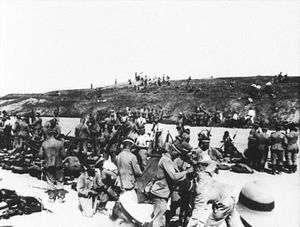Today, the world celebrates the 100th anniversary of the end of the First World War. Although the end of the war had little immediate practical impact in East Asia, where the bulk of fighting had ended some years previously, the armistice inevitably opened a discussion of the new global security order. With Russia broken, Austria-Hungary gone, and Germany tamed, East Asia seemed the most likely arena for great power competition.
In the immediate wake of World War I political and naval authorities in Britain, the United States, and Japan planned to build extensive fleets of battleships and support vessels in order to replace obsolescent ships, take advantage of new technologies, and prevent the other major powers from building an insurmountable naval lead. The chief security arrangement in East Asia was the Anglo-Japanese alliance, which in World War I had helped ensure Japanese participation in both the Pacific and Europe. The brute fact of American economic power threatened to destabilize the global order, as the United States could conceivably outcompete both Japan and the United Kingdom.
The great powers appreciated the potential for competition in East Asia, and understood that existing arrangements were insufficient. The prizes included economic and political access to China, to Oceania, and to Southeast Asia, which Japan, the U.K., and the United States roughly divided between them (the Netherlands and France also participated, but were clearly second and third tier powers).
The resolution involved both territorial distribution and arms control. Japan received most of the German possessions in the Pacific (including, controversially, German enclaves in China), while colonial control of the rest of Southeast Asia was confirmed. The contours of the arms control agreement are well-known; each of the United States, the U.K., Japan, France, and Italy agreed to limits on naval construction (at roughly a 10:10:6:3:3) ratio, while the U.S. and the U.K. agreed to refrain to further fortifying their bases in the Western Pacific. All countries would enjoy a degree of access to China, although certain Chinese sovereign rights would be protected. Japan and the United Kingdom abrogated their alliance.
The security architecture of East Asia did not include either China or the Soviet Union in any meaningful way. The latter was too weak to threaten any major power, was distracted by its own internal troubles, and in any case was distasteful to deal with. The former was similarly distracted by internal problems and lacked any meaningful capacity to exert power internally or externally.
That security order, undergirded by the arms control agreements that constituted the Washington Naval Treaty system, represented an effort to limit security dilemma dynamics in East Asia while reserving sufficient freedom of action for all of the major powers. It could not survive beyond major shifts in the distribution of power or significant changes in the nature of military technology, but it should not have been expected to; for a time, it managed competition, and reduced the chance of war. That’s all it needed to do.
Unfortunately, no similar effort to conceive of an inclusive security architecture followed the end of the Cold War. Instead, the system of alliances and international organizations that the United States had created and nurtured during the Cold War remained afterwards, despite a growing mismatch between institutional architecture and socioeconomic reality. And the arms control arrangements that bind the major powers (including, among other things, the INF Treaty and the constraints on Japanese military spending) were designed to manage the Cold War, not the emerging order of the 21st century Indo-Pacific.
But that doesn’t mean it’s too late. The first questions that we should ask of any institutional arrangement are whether it recognizes structural and technological reality, and whether it helps manage competition between great powers. If it doesn’t (like the INF Treaty), then we can safely discard it and begin work on something new.
The views expressed here are his personal views and do not necessarily reflect those of the Department of Defense, the U.S. Army, the Army War College, or any other department or agency of the U.S. government.

































